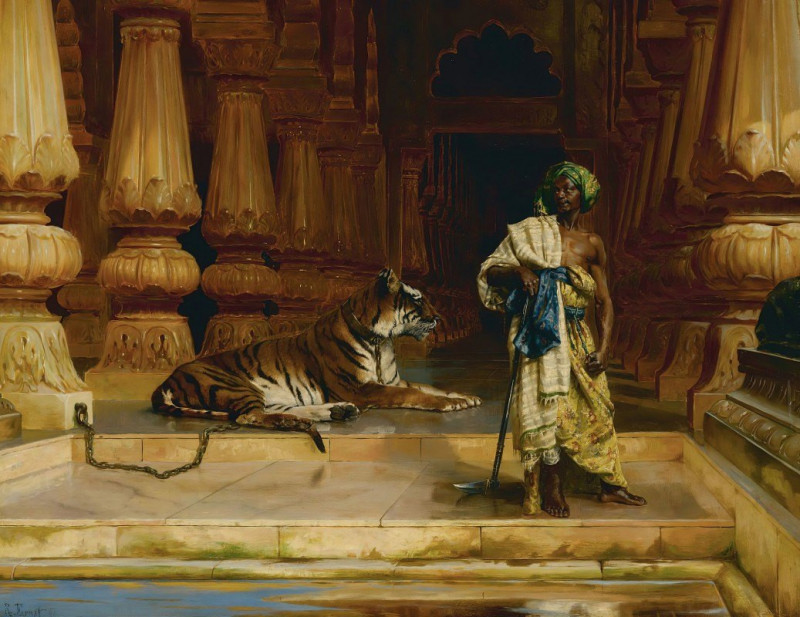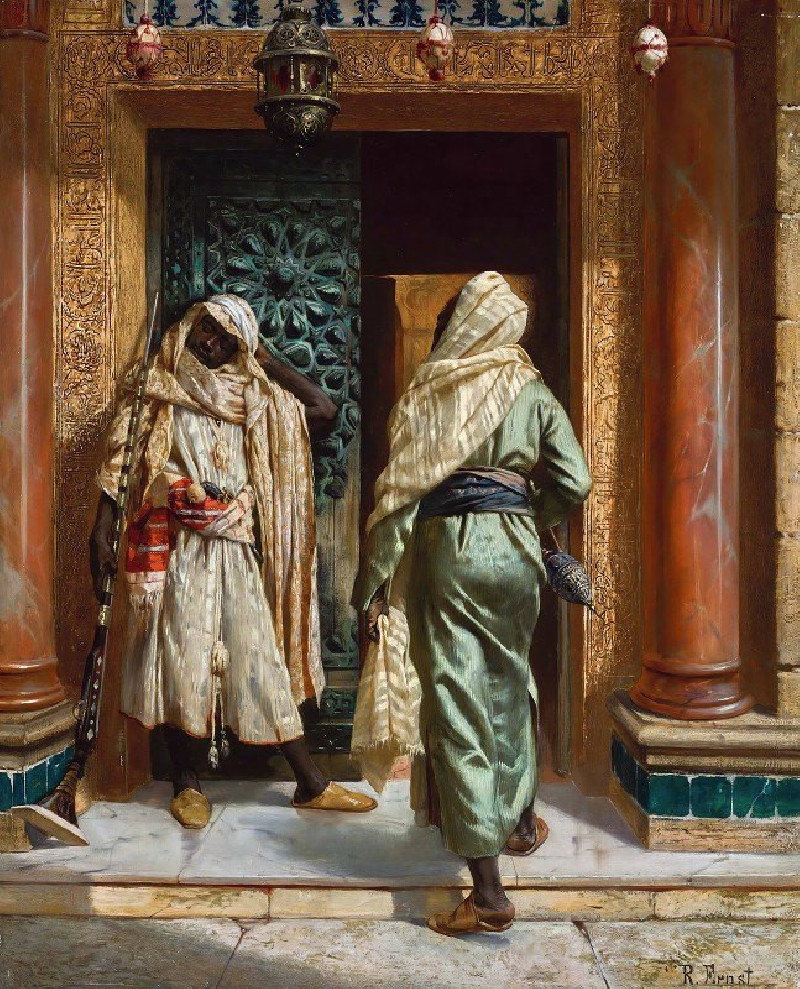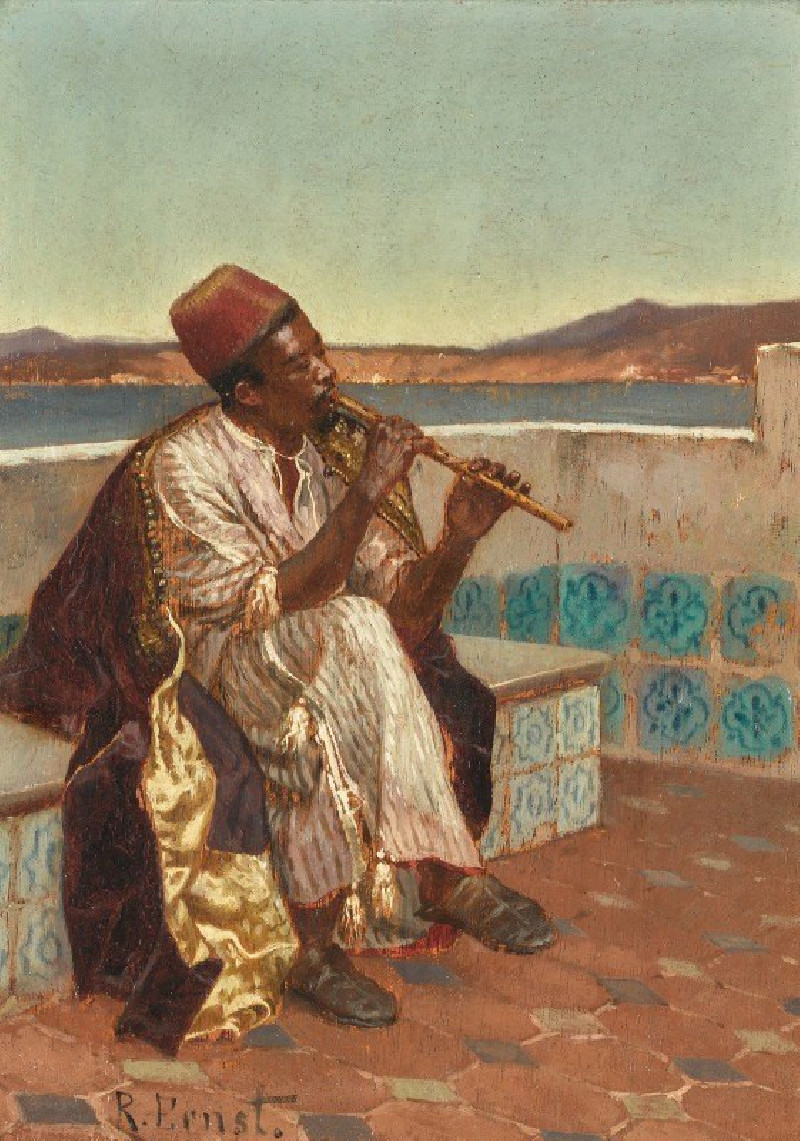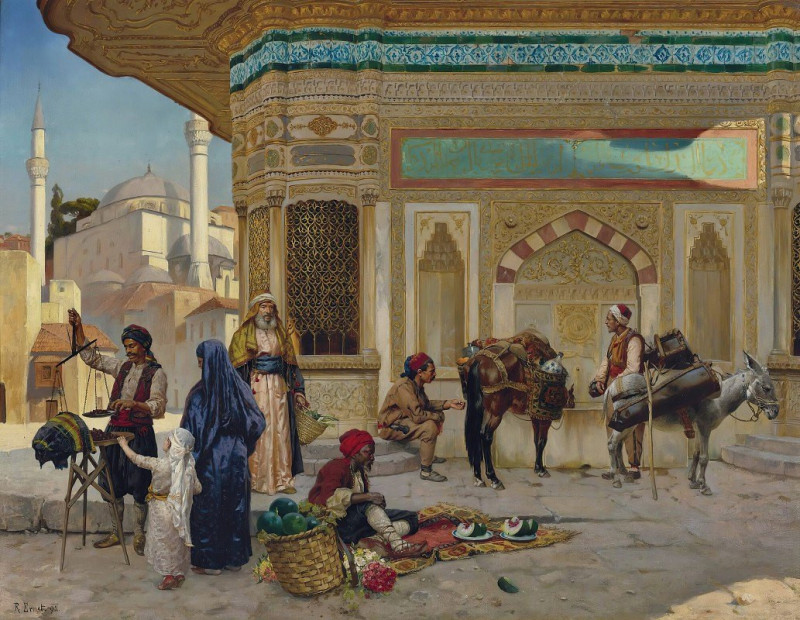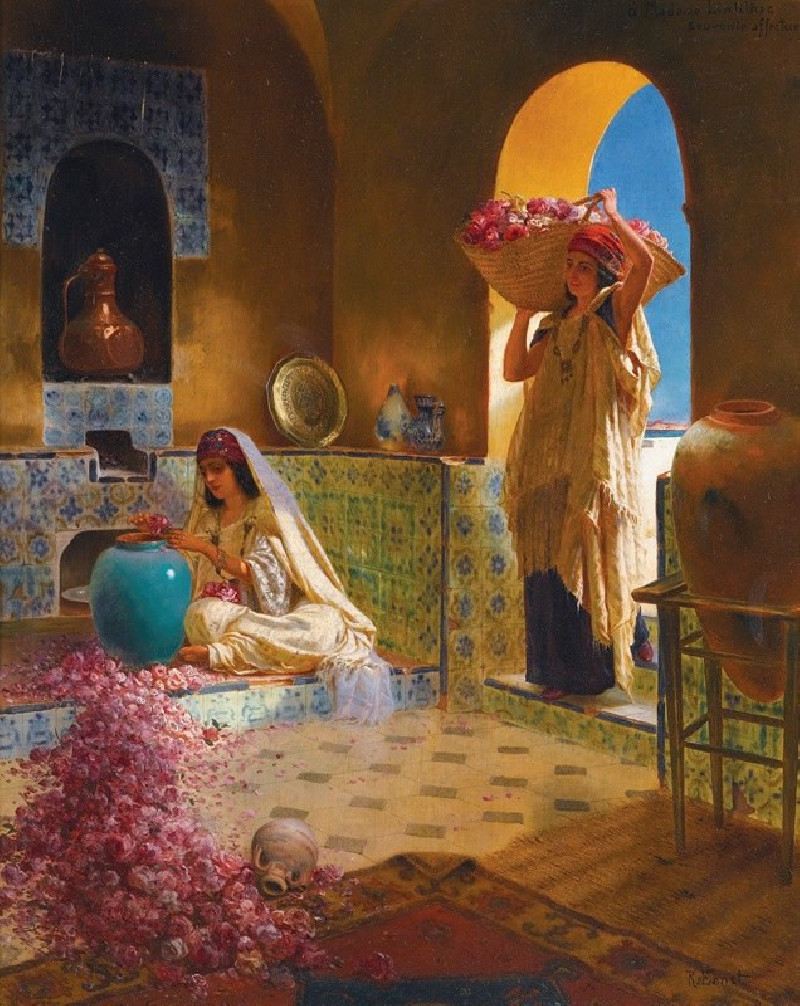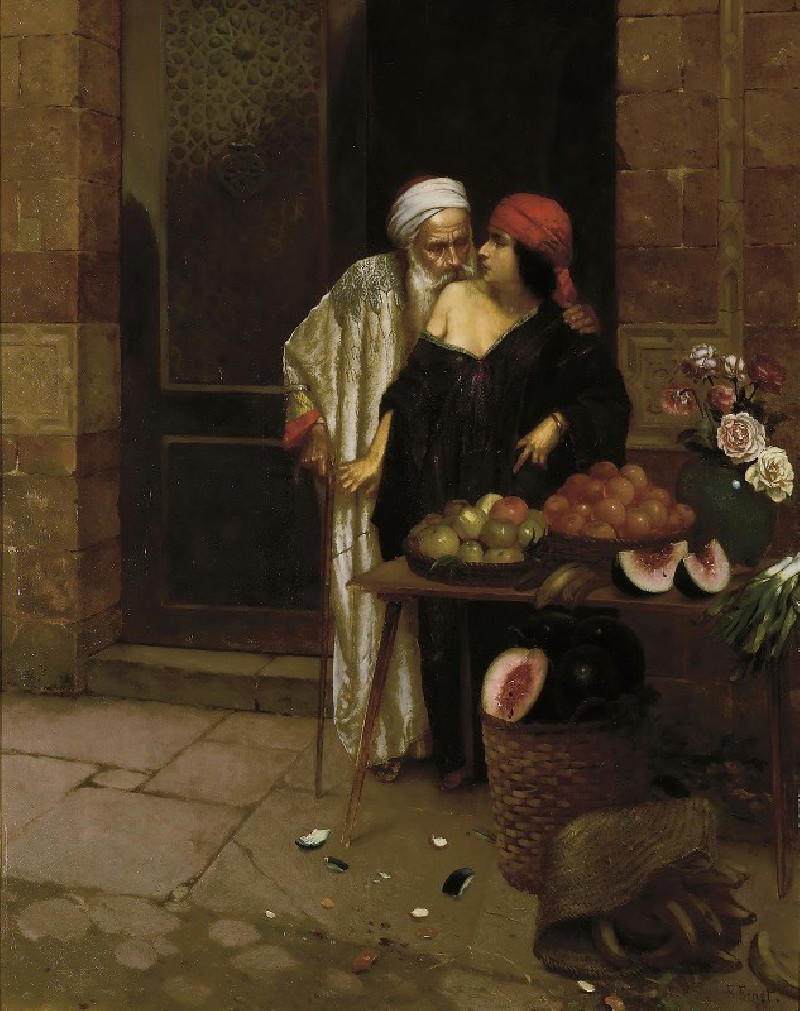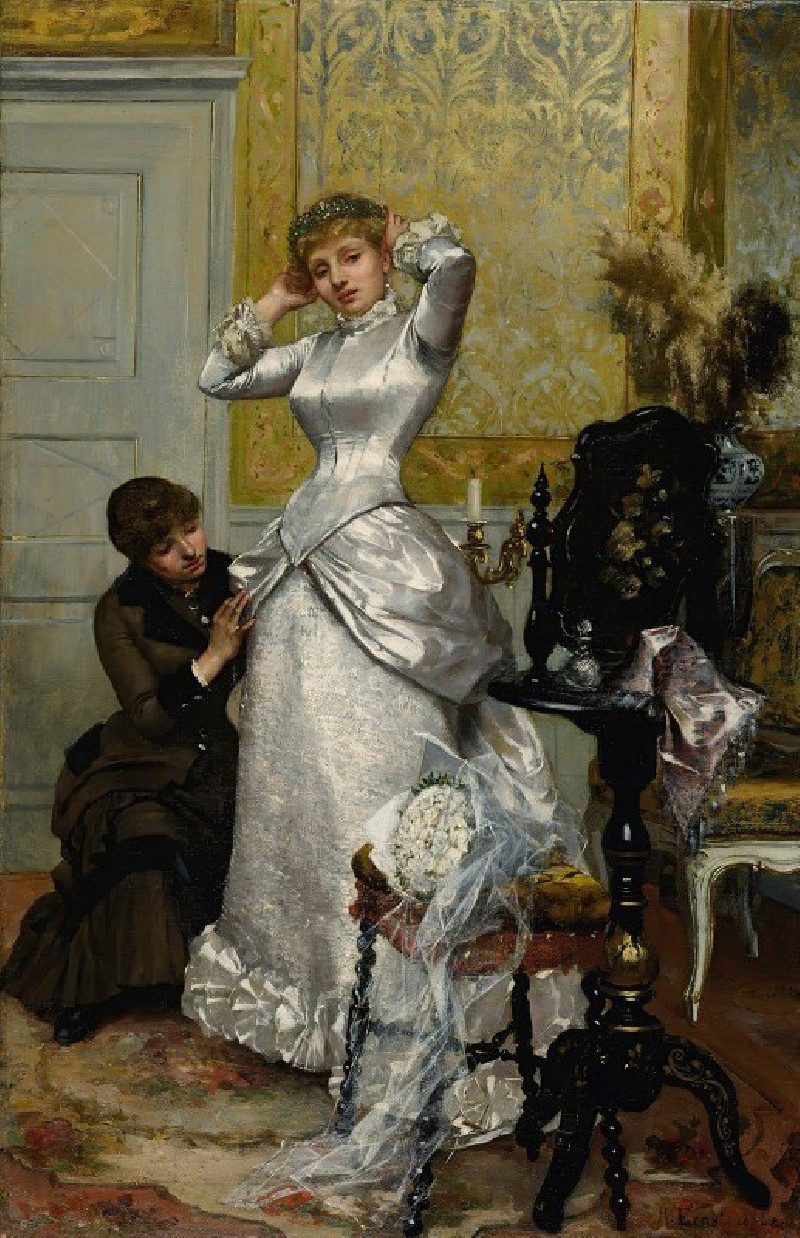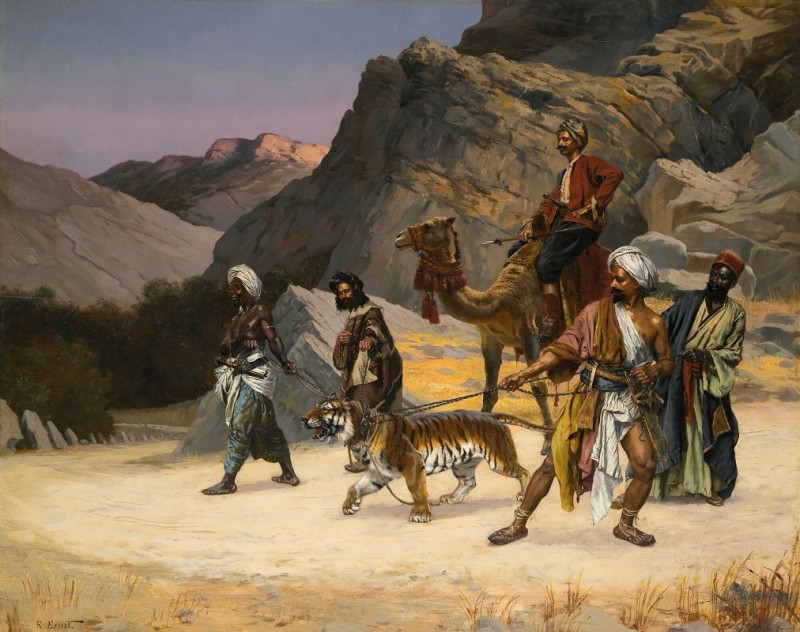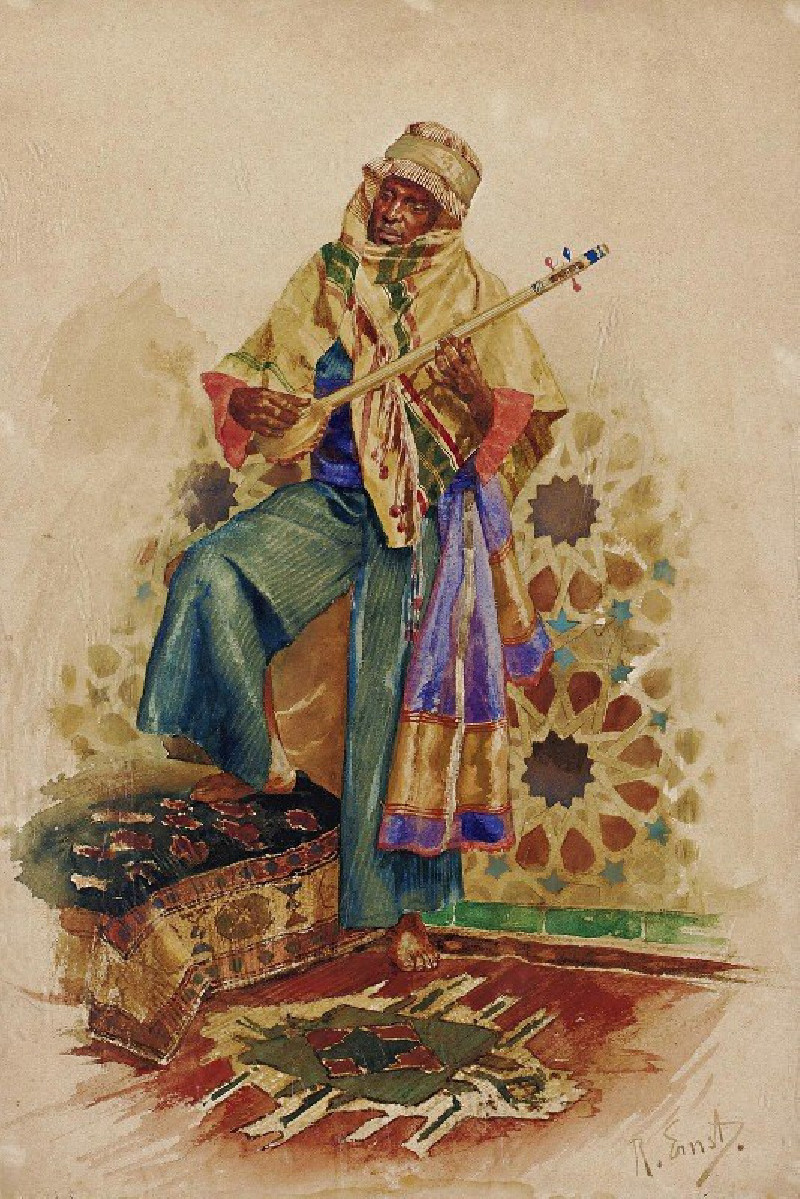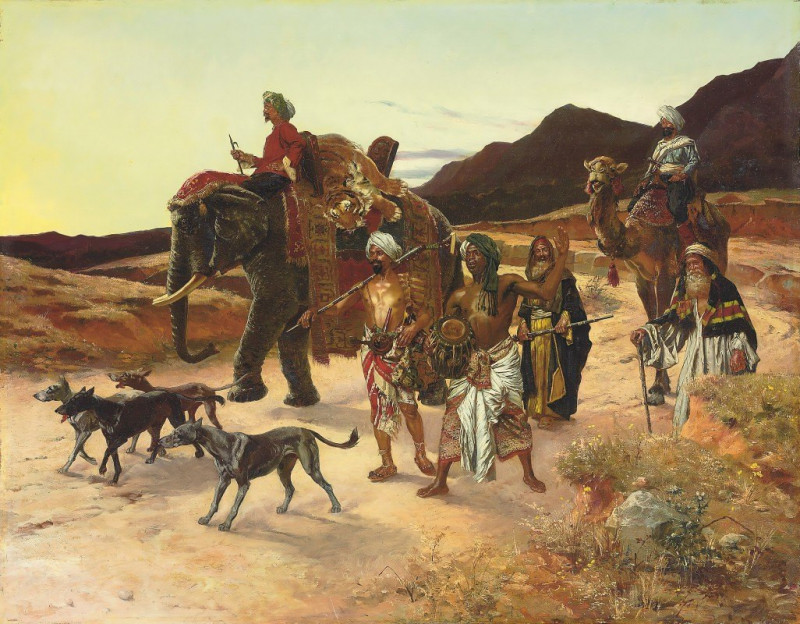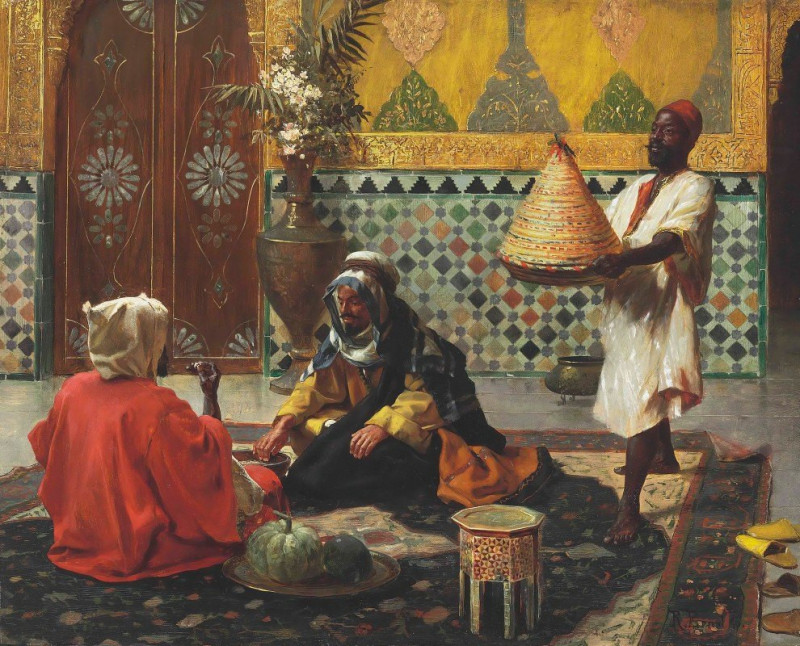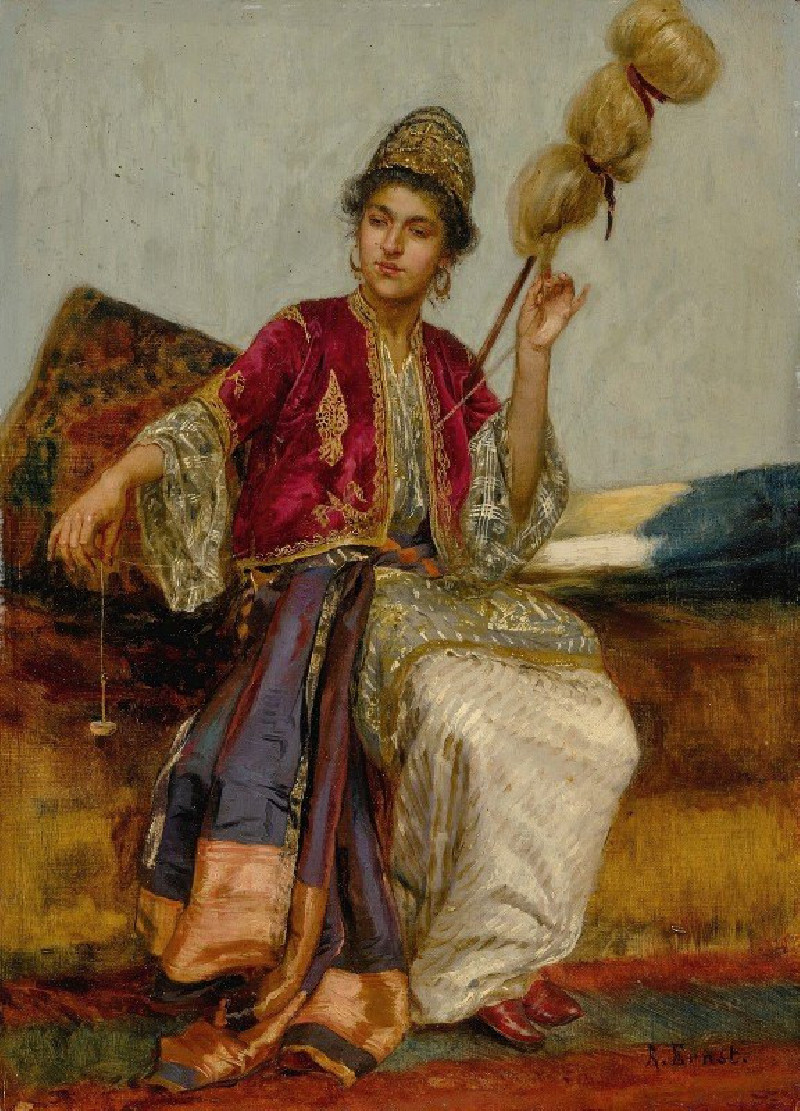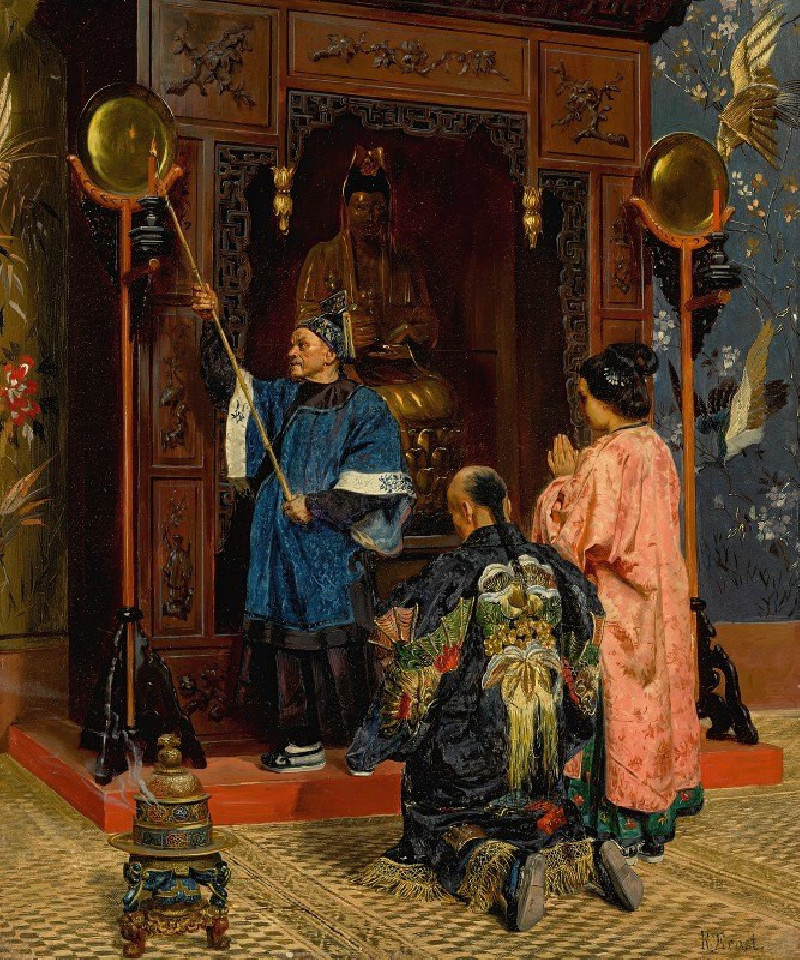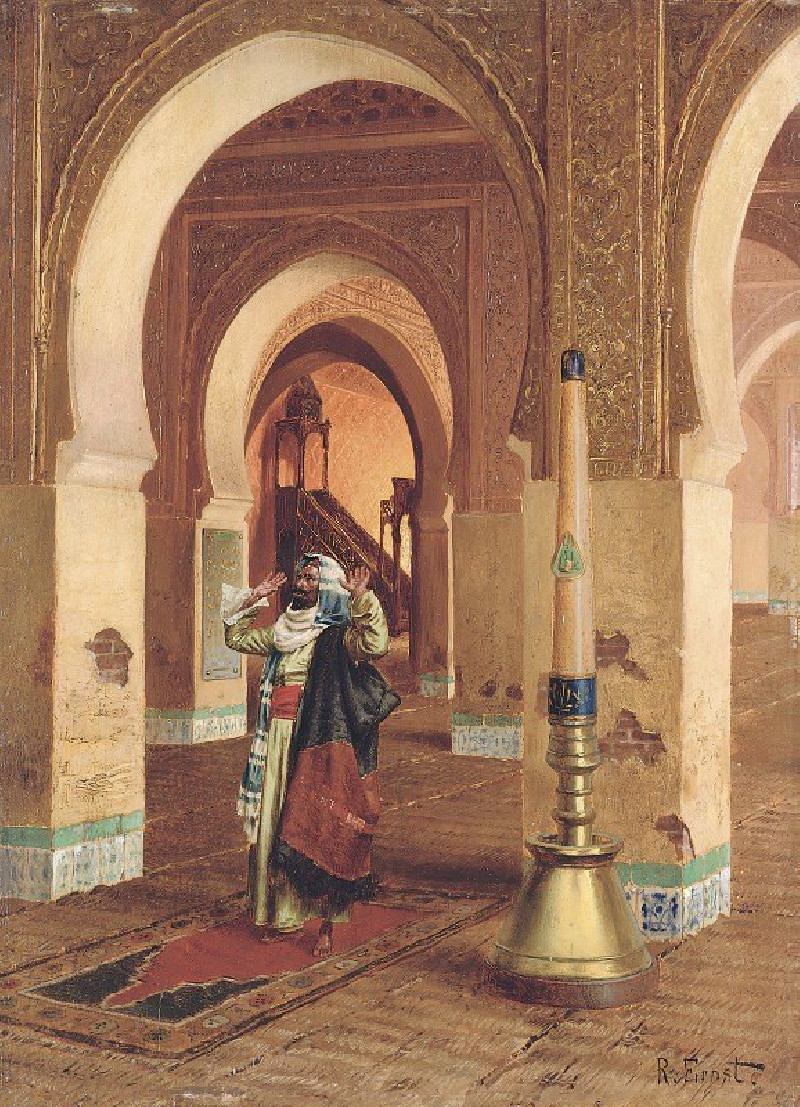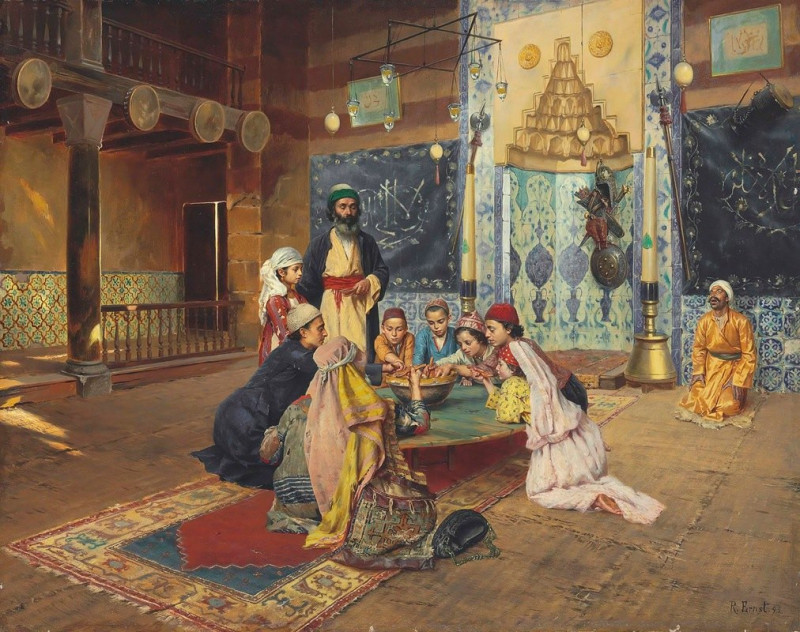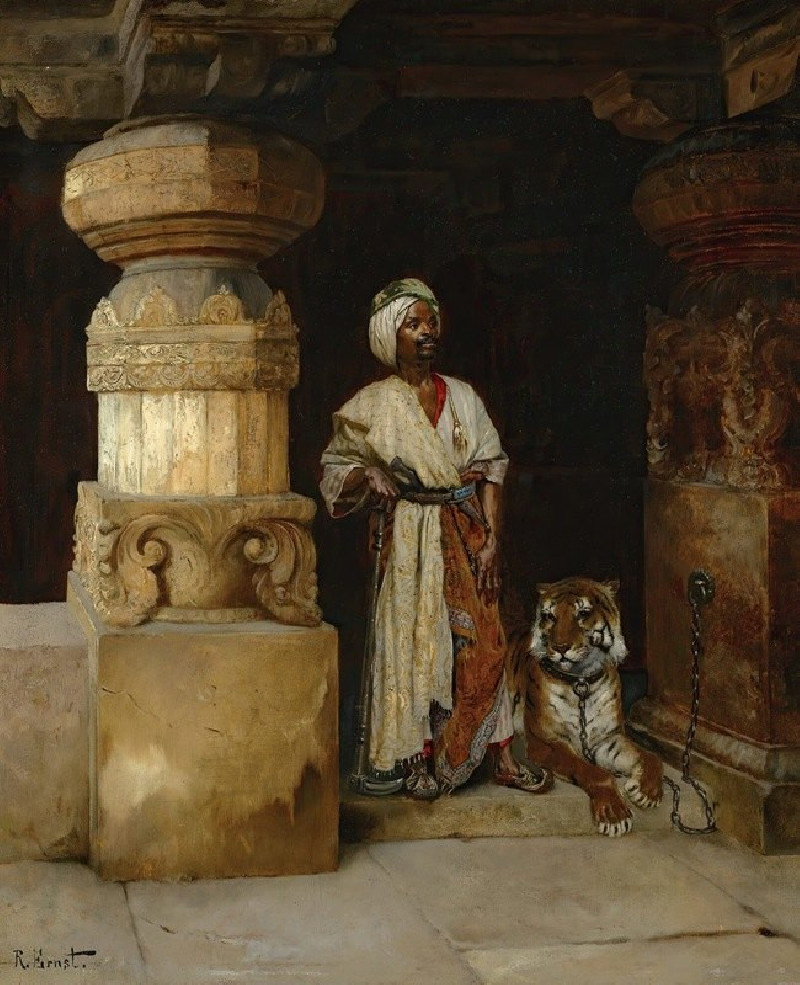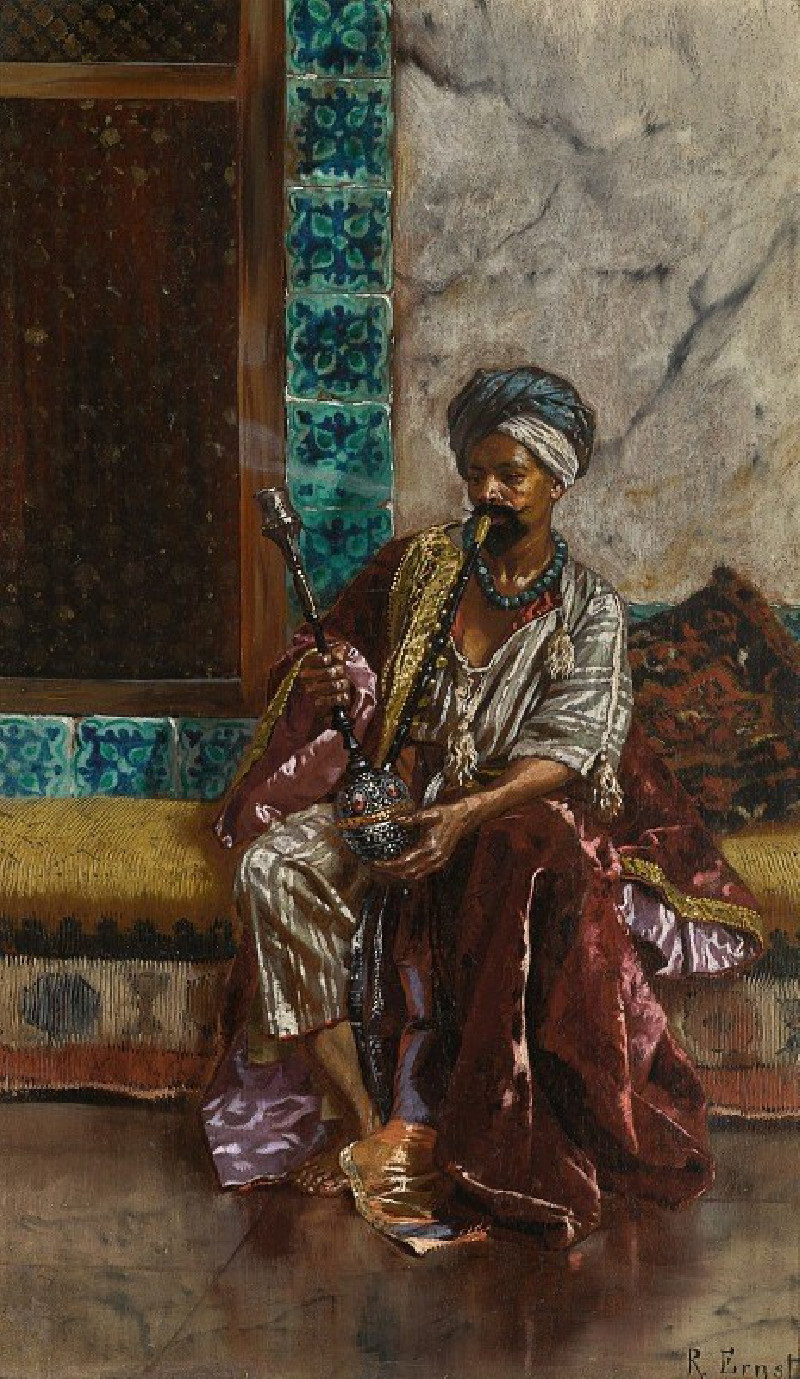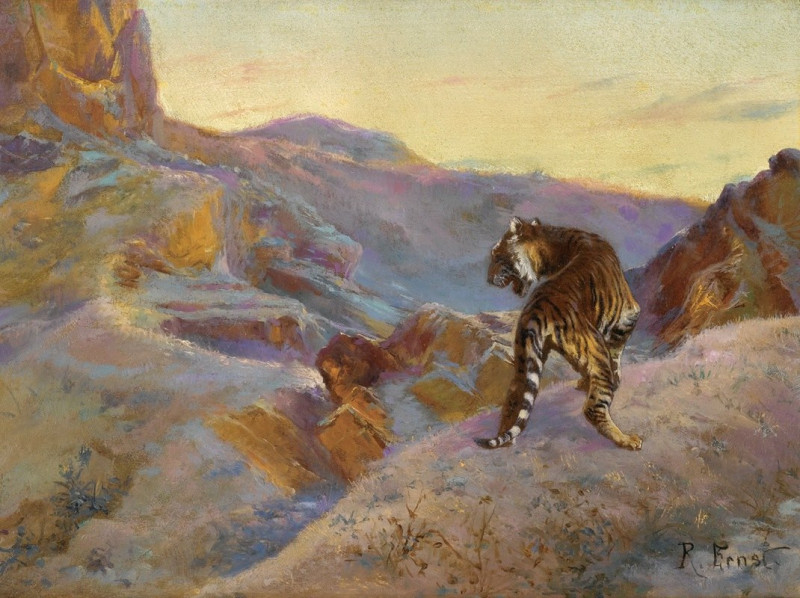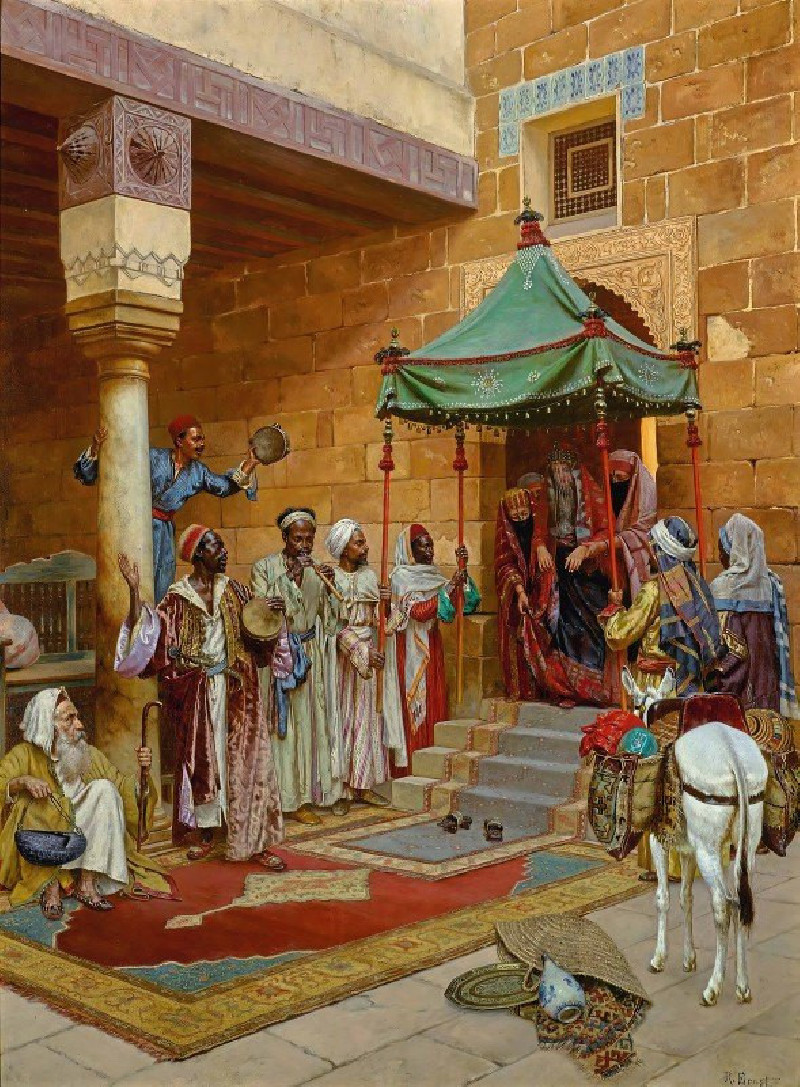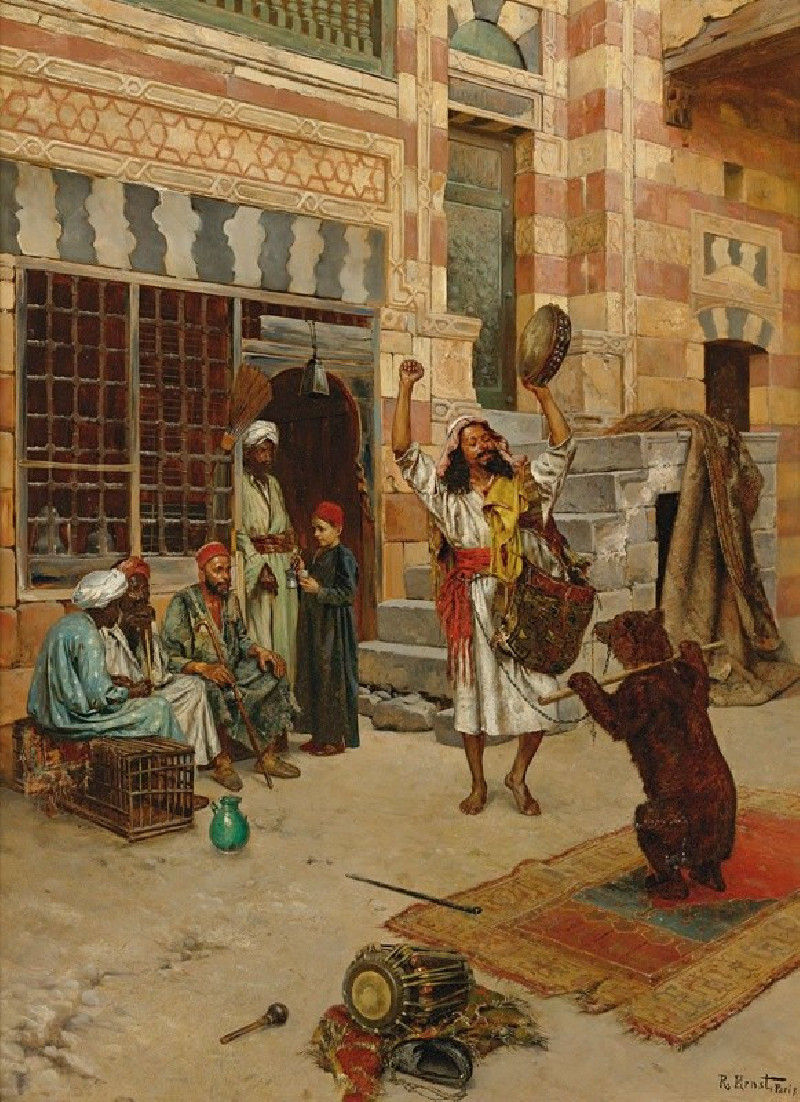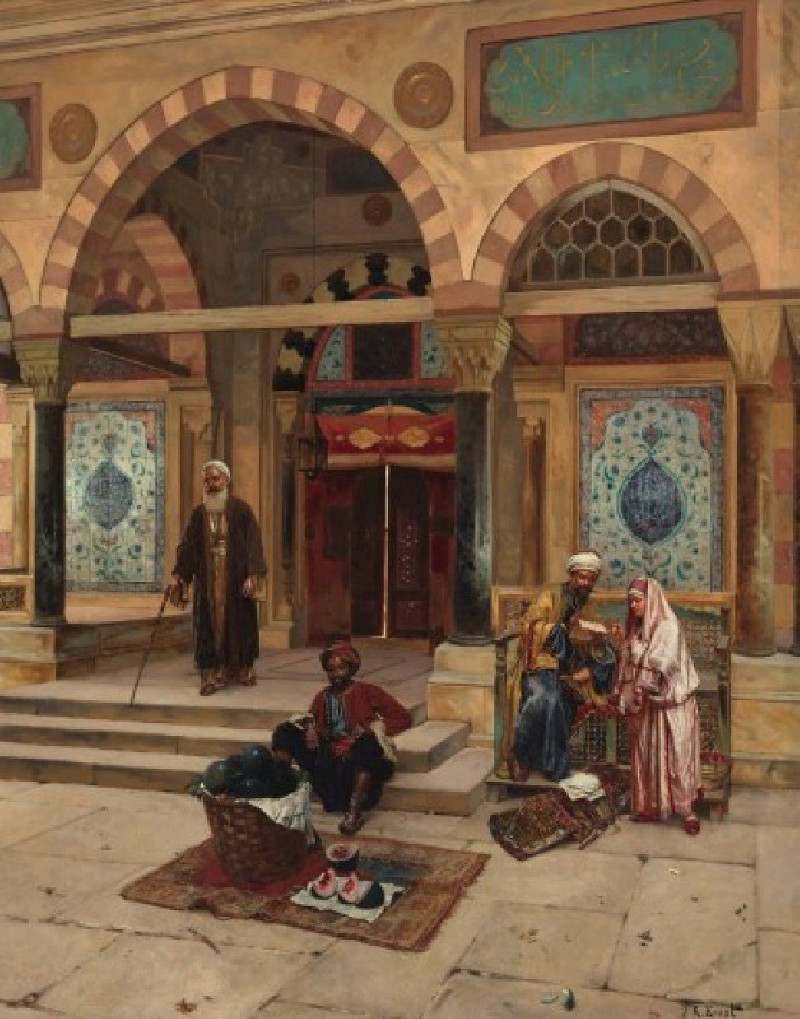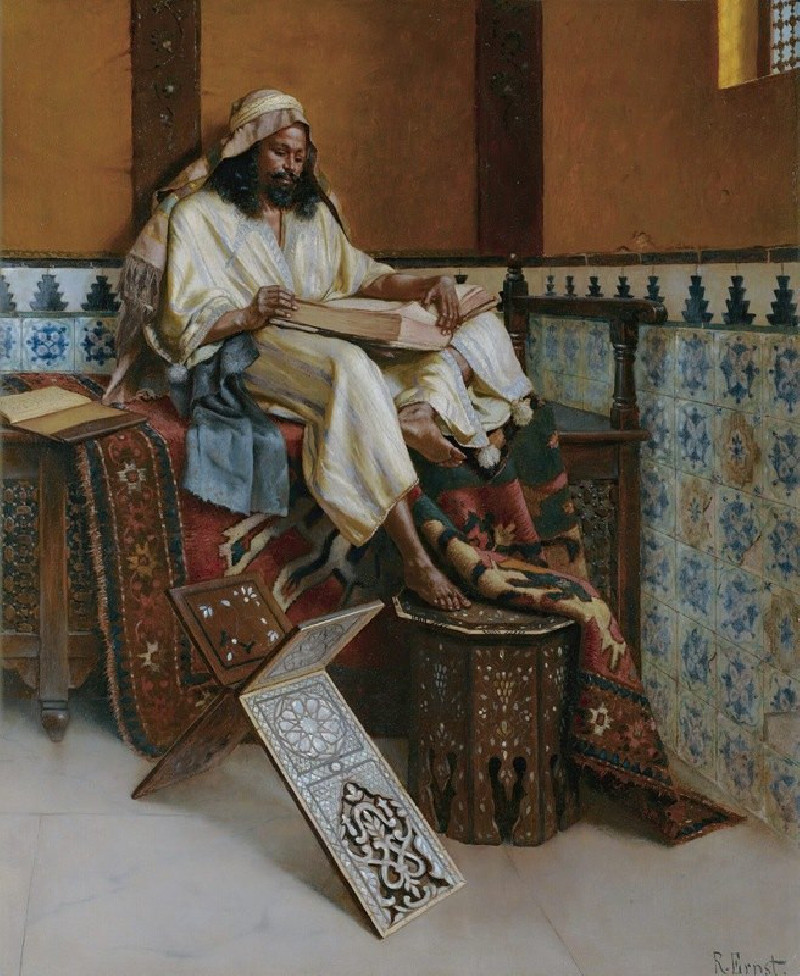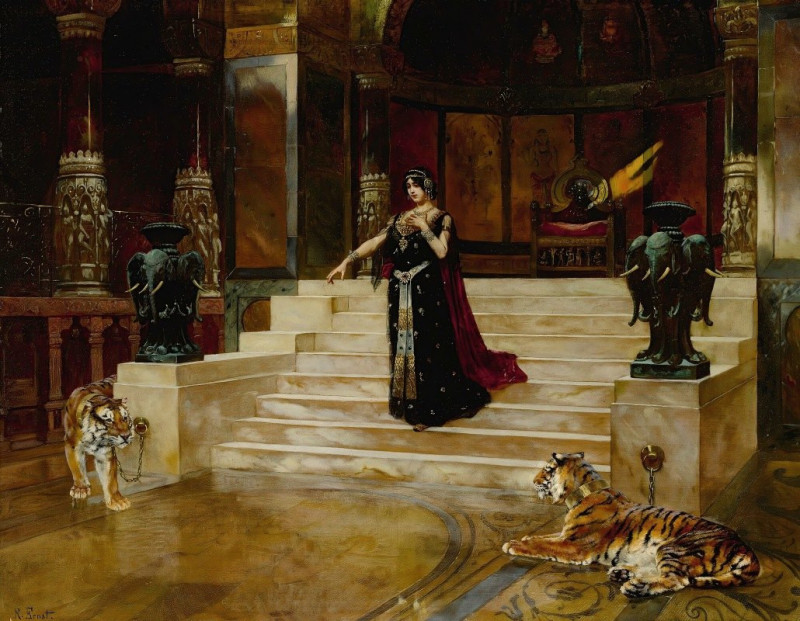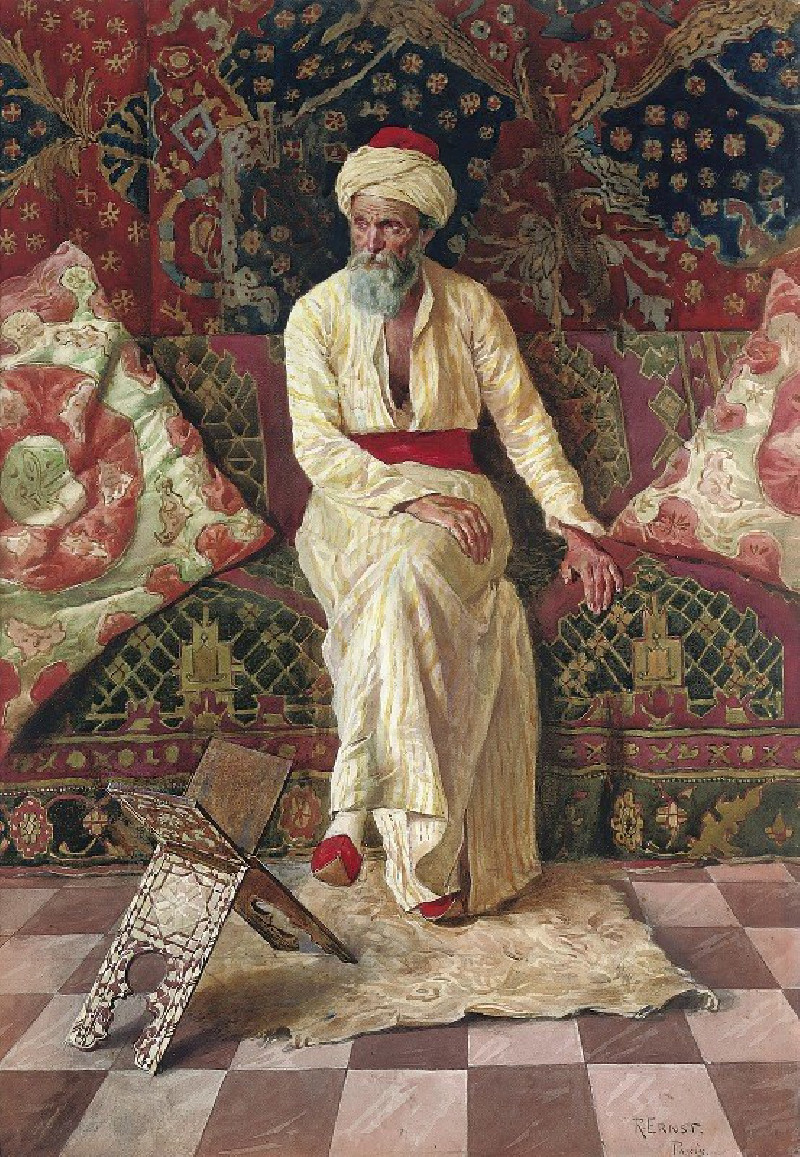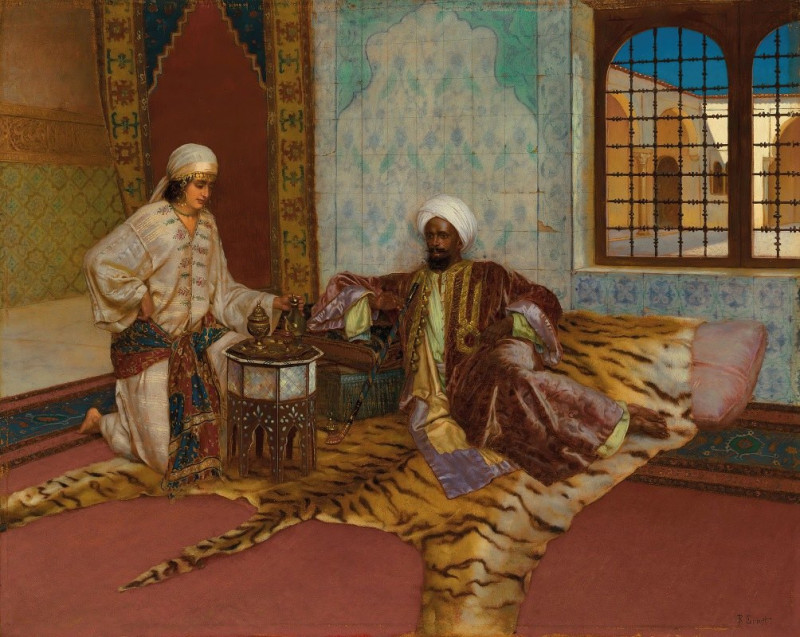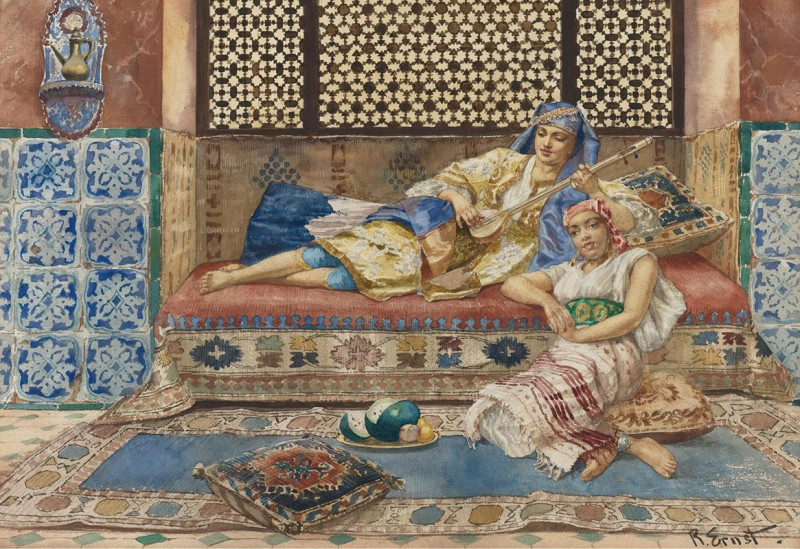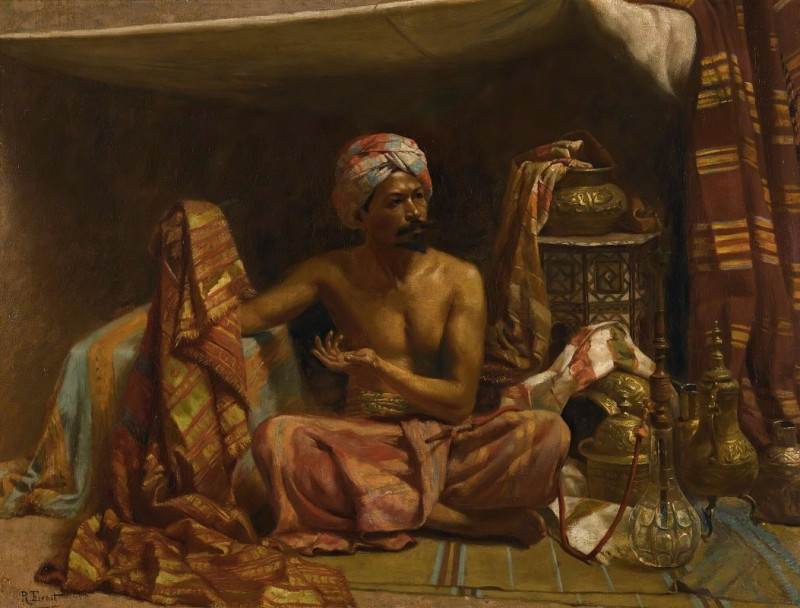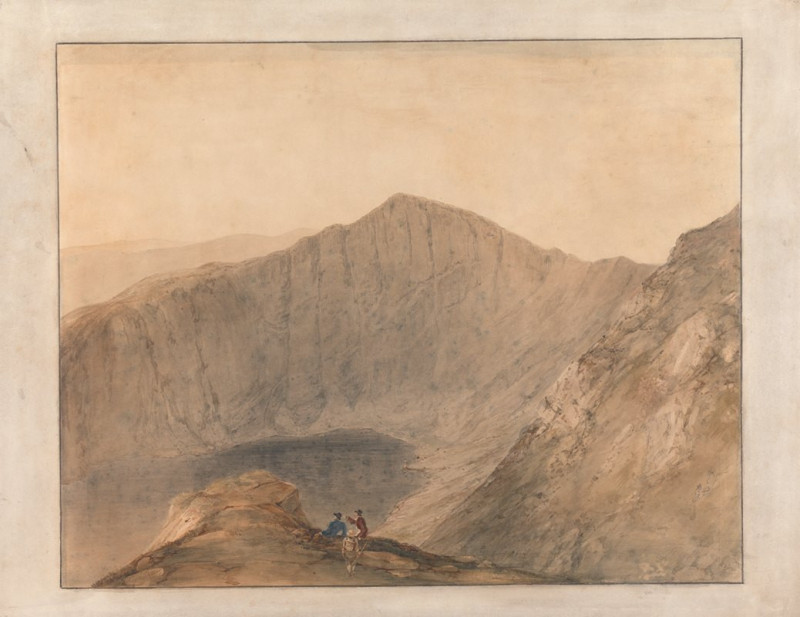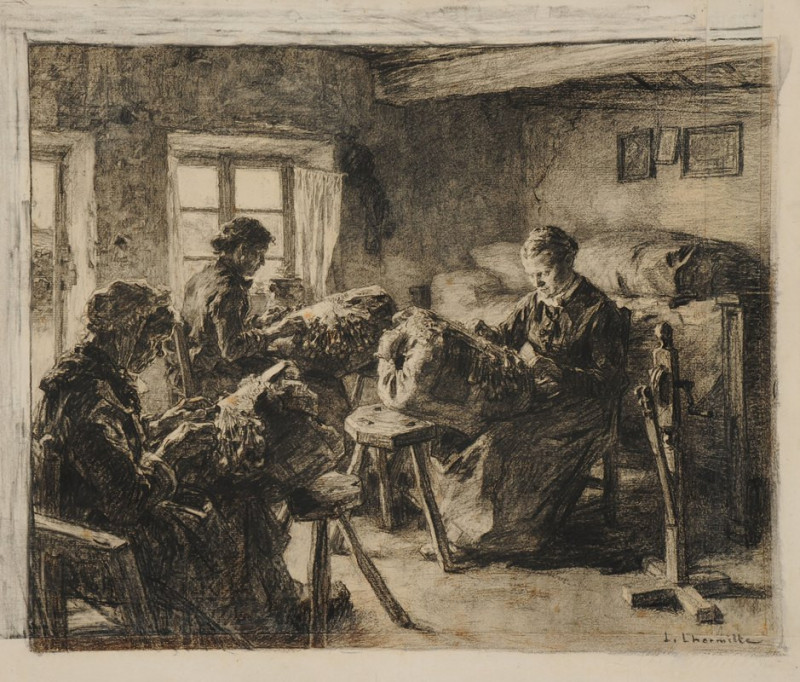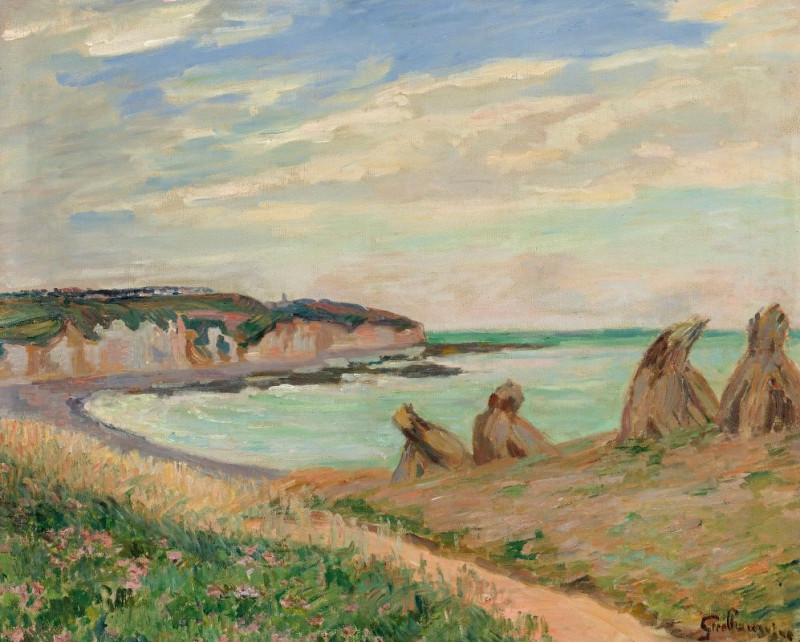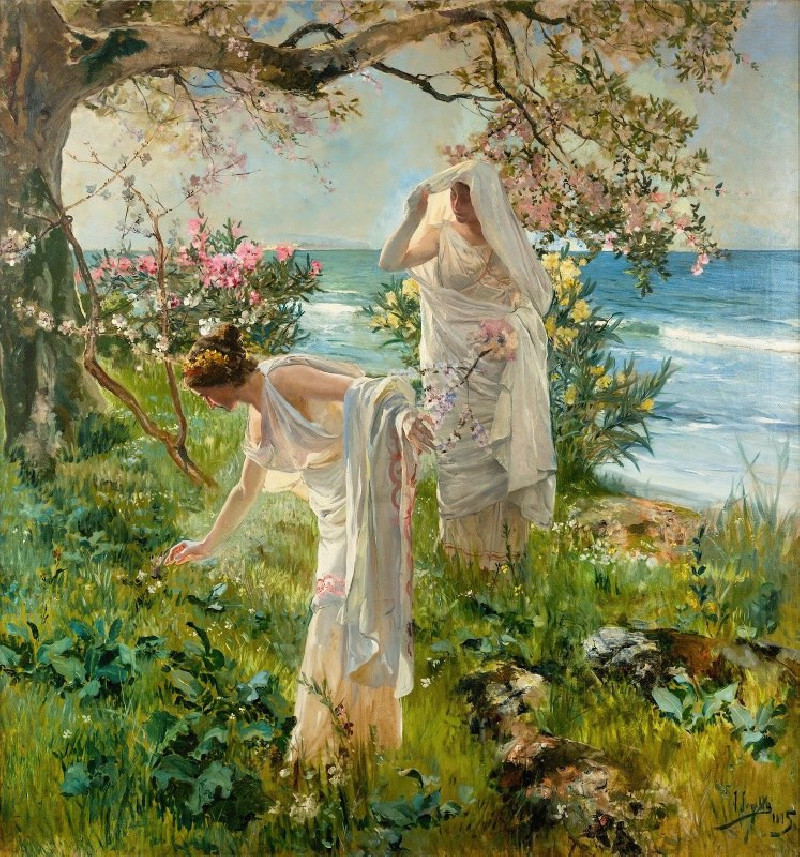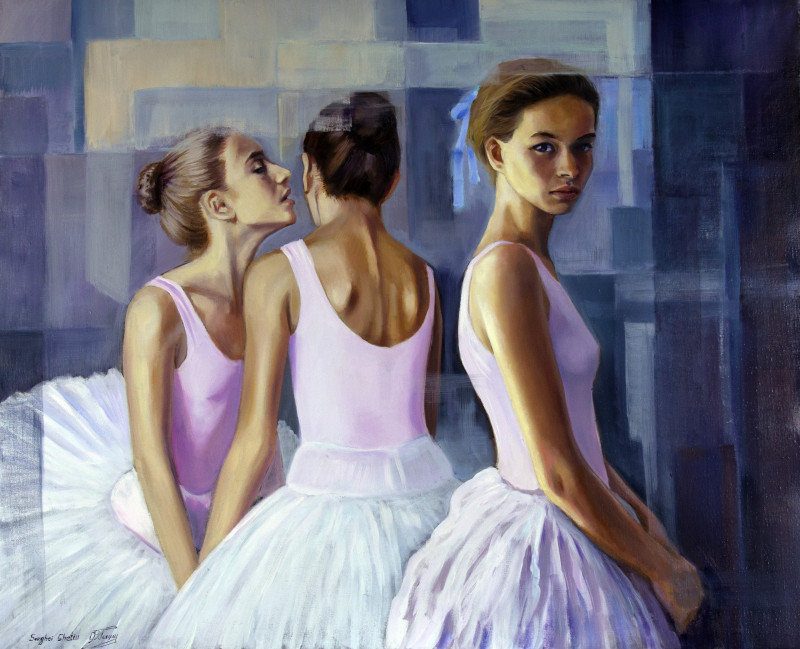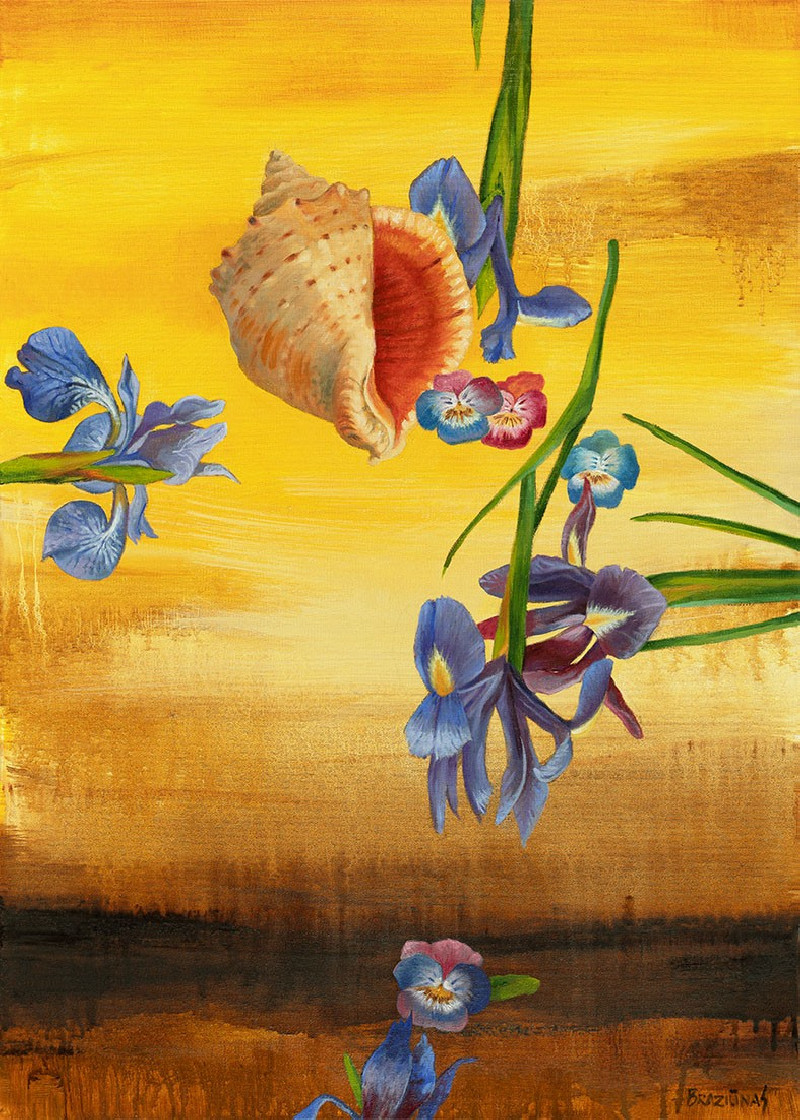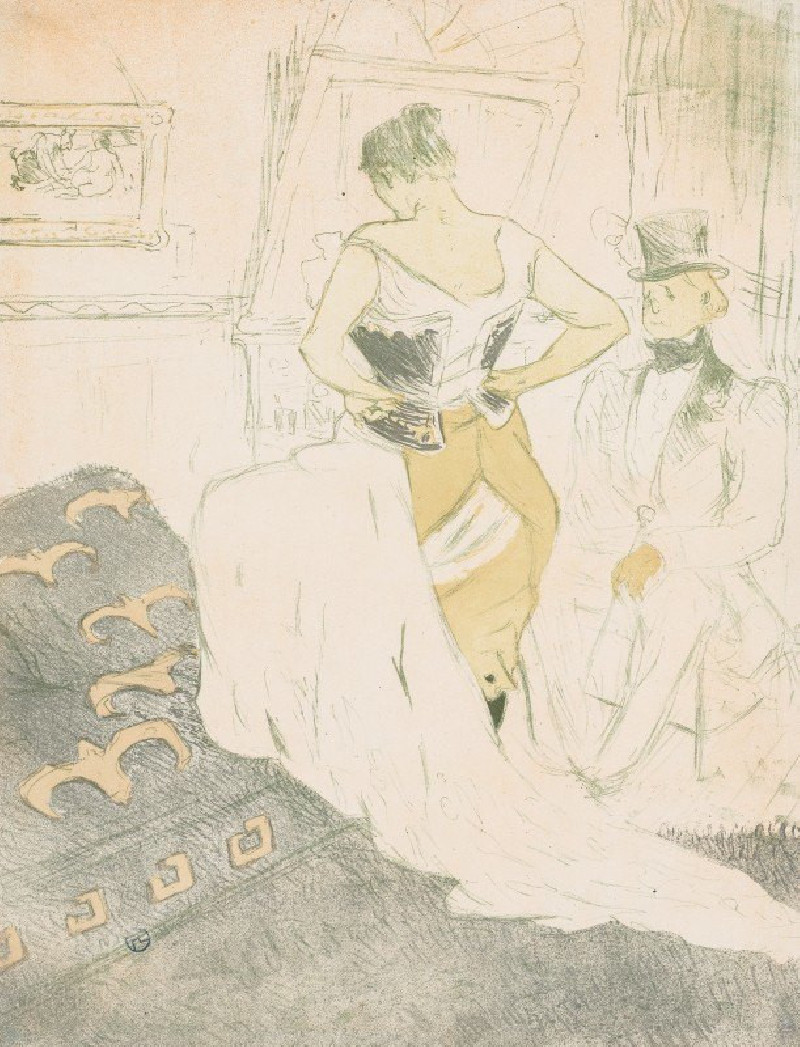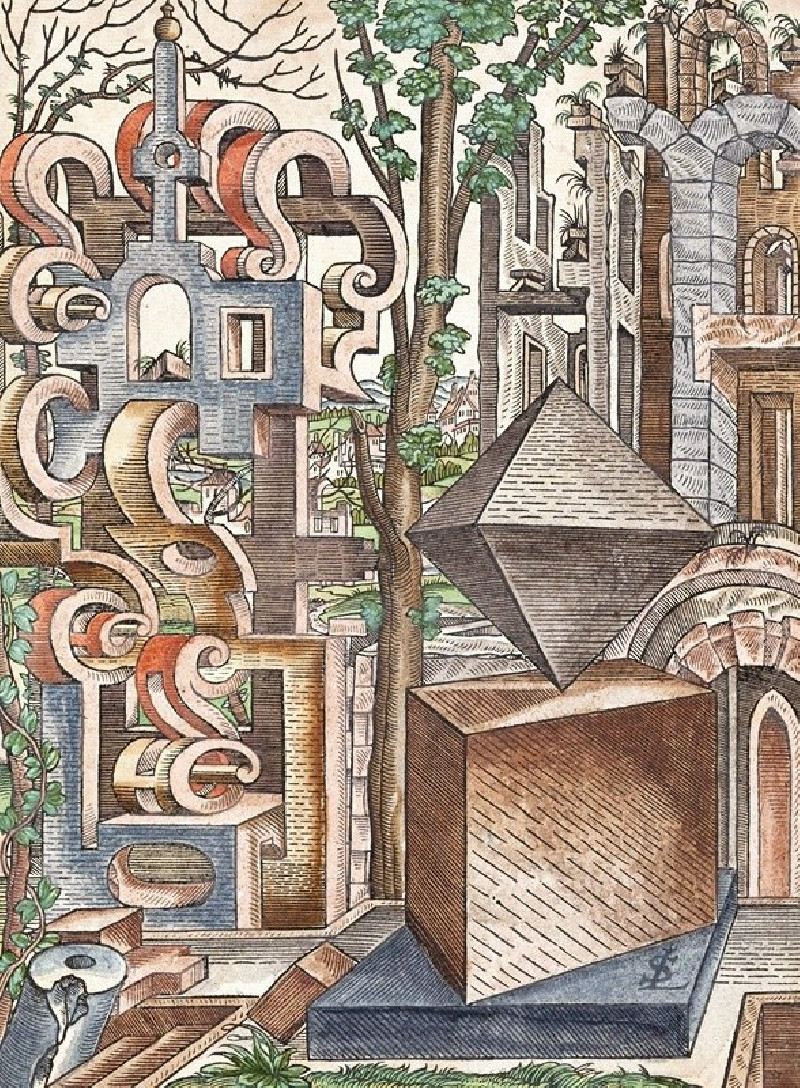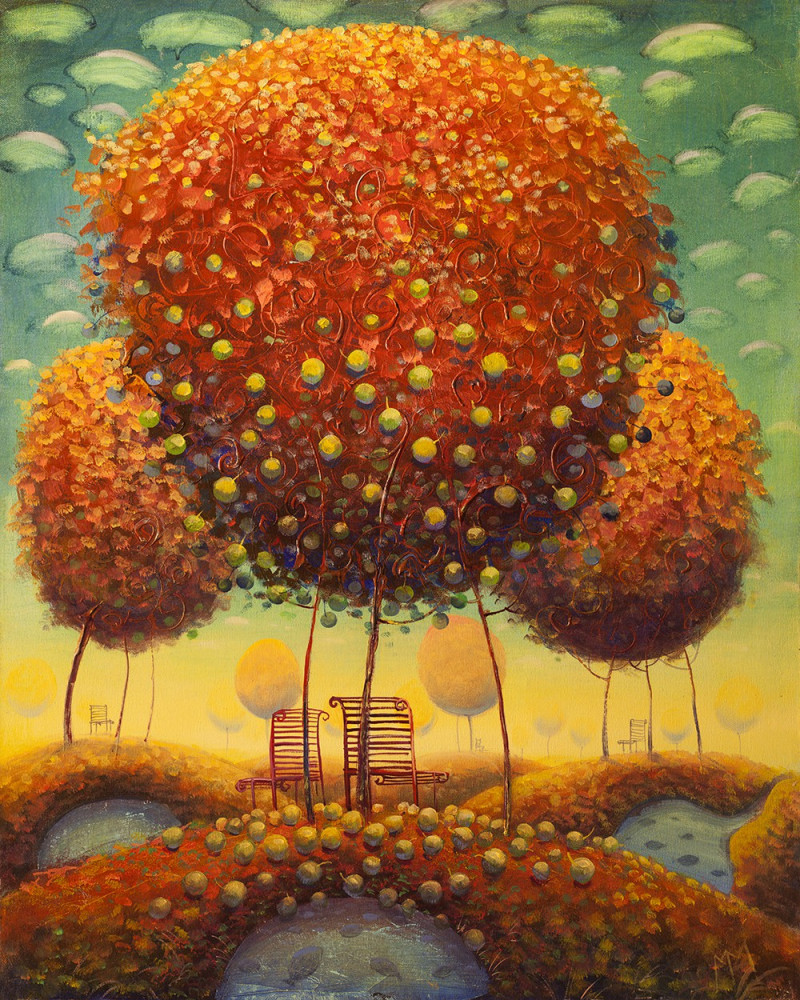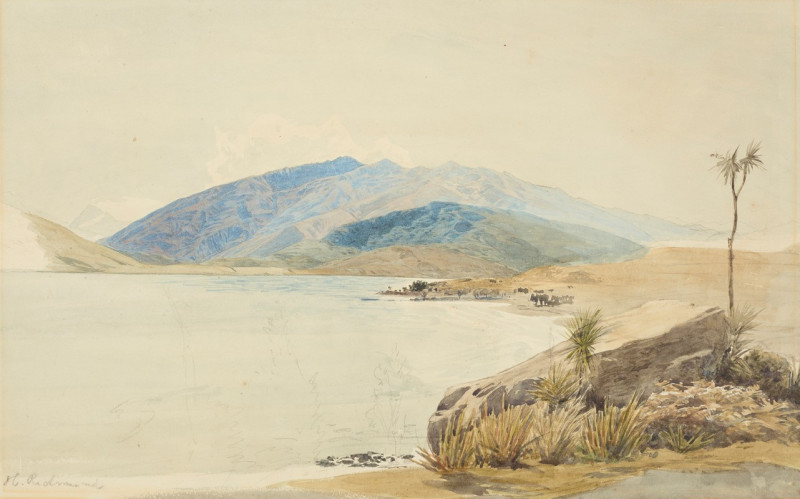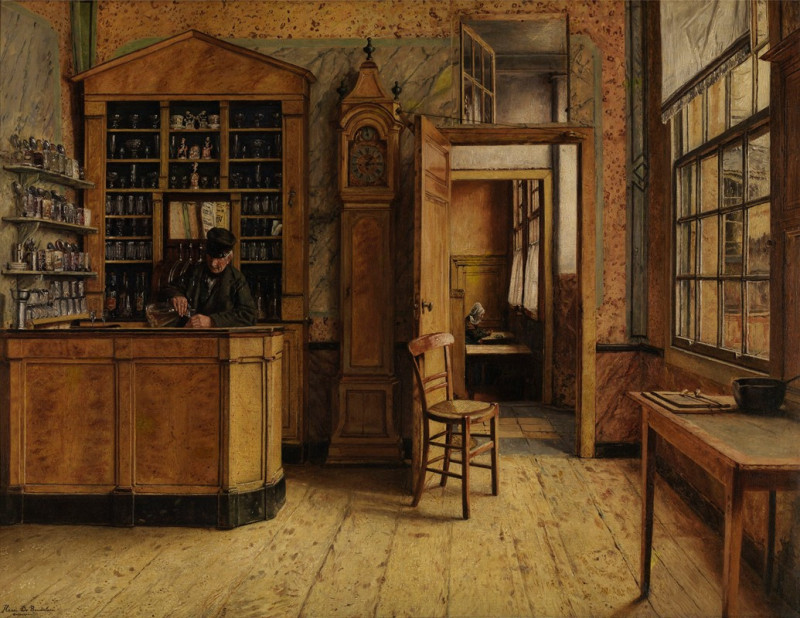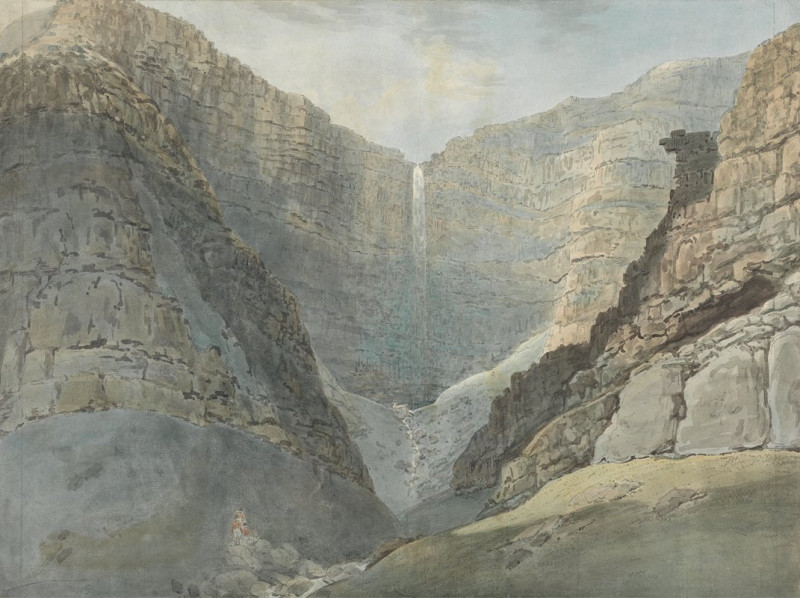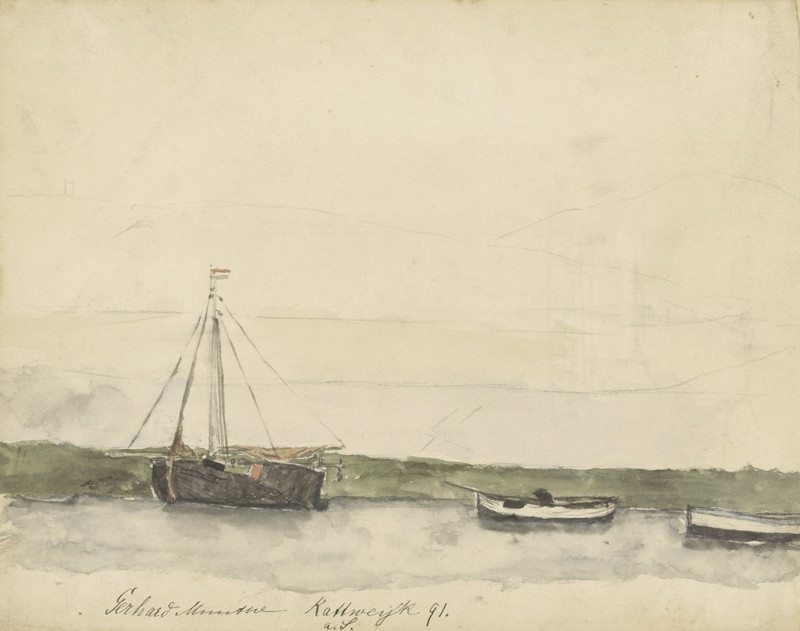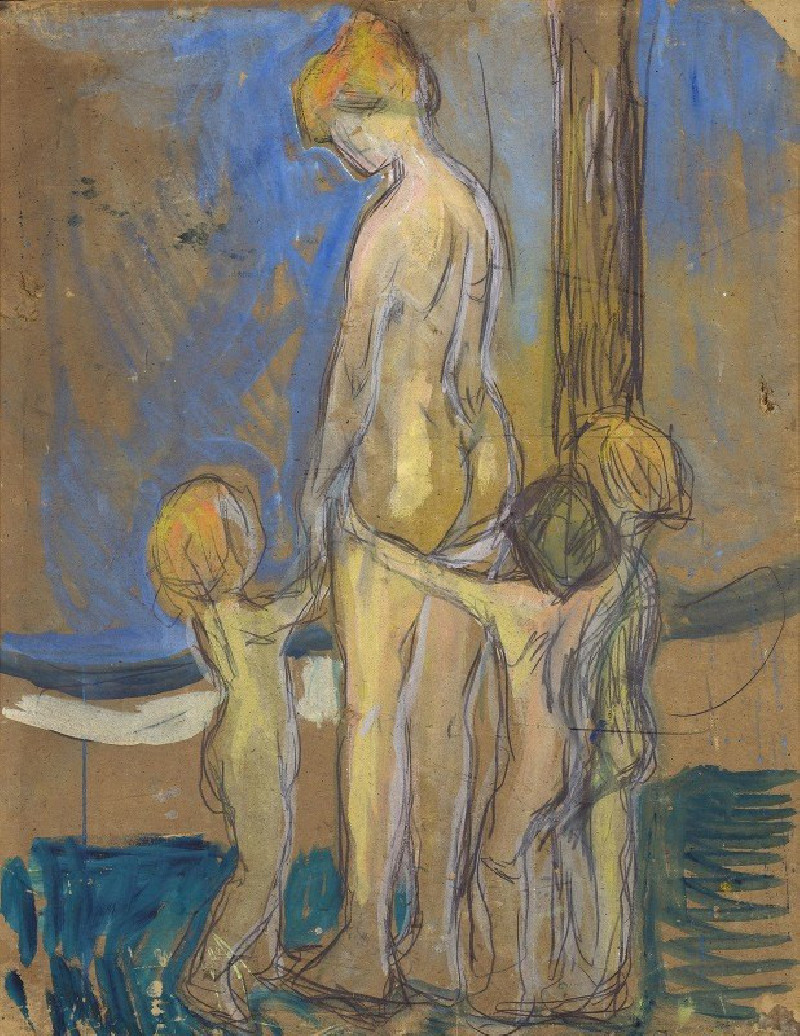The Palace Guards (1890)
Technique: Giclée quality print
Recommended by our customers
More about this artwork
Rudolf Ernst’s painting "The Palace Guards" (1890) is a captivating example of Orientalism, a genre popular in the 19th century that depicted exotic and often romanticized views of Eastern cultures. In this particular work, Ernst invites us into a sumptuous palace setting, where the eye is treated to a tableau of regal splendor and vigilant guardianship.The scene is set within the architectural beauty of a richly detailed palace. Corinthian columns and intricate motifs in the stone work frame the painting, creating a powerful sense of depth and opulence. Set against this backdrop is a striking duo—a palace guard and a tiger, each representing power and might in their own unique ways.The guard, a figure of robust poise, stands erect with a relaxed yet alert demeanor. His attire is rich with vibrant patterns and colors, suggesting his high status or ceremonial role within the palace. Adorned with a green turban and draped in fine fabrics, he embodies the exotic allure that Western artists often attributed to Eastern figures in this period.Beside him, a tiger reclines calmly, its formidable presence juxtaposed against its serene pose. The chain loosely attached to its collar suggests domestication but also subtly hints at the latent power and danger it represents. This tiger, much like the guard, serves as a protector of the opulent realm they inhabit.Ernst’s skill in rendering textures—from the polished stone surfaces to the silky garments and the tiger’s striped fur—adds a tactile quality to the visual experience. Light plays dramatically across the composition, highlighting the physical and symbolic contrasts between the man-made splendor of the palace and the natural strength of the tiger.
Delivery
Returns
Rudolf Ernst was an Austro-French painter, printmaker and ceramics painter who is best known for his orientalist motifs. He exhibited in Paris under the name "Rodolphe Ernst".
He was the son of the architect Leopold Ernst and, encouraged by his father, began studies at the Academy of Fine Arts Vienna at the age of fifteen. He spent some time in Rome, copying the old masters, and continued his lessons in Vienna with August Eisenmenger and Anselm Feuerbach.

